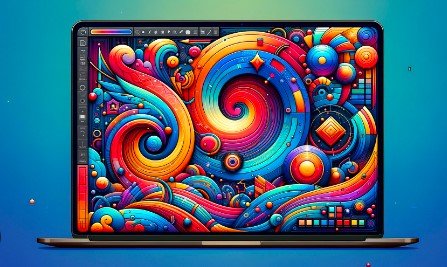Mastering SVG Design and Layout: A Comprehensive Guide
Scalable Vector Graphics (SVG) is a powerful format for creating high-quality, resolution-independent graphics on the web. SVG’s popularity stems from its scalability, small file size, and versatility. This guide explores the principles and practices of SVG design and layout, offering insights into best practices and advanced techniques for creating stunning and efficient vector graphics.

Understanding SVG Basics
SVG is an XML-based vector image format used to define graphics in a scalable manner. Unlike raster images, SVG graphics maintain their clarity and detail at any size, making them ideal for responsive web design.
SVG Syntax and Structure
SVG files are composed of XML code that describes shapes, paths, and text. The core elements include:
<svg>Element: Serves as the container for all SVG elements.- Shapes: Basic elements like rectangles, circles, ellipses, and lines are used for creating simple graphics.
- Paths: These elements define complex shapes with precise control over lines, curves, and arcs.
- Text: Allows for embedding text within SVG graphics.
Designing with SVG
SVG design involves creating graphics that are both visually appealing and functional. Key design principles and techniques include:
Creating Scalable Graphics
One of SVG’s greatest strengths is its scalability. Unlike raster images, SVG graphics can be resized without losing quality, making them ideal for responsive web design.
- Use Relative Units: Define sizes and positions with percentages or viewport units to ensure scalability across different devices.
- Optimize Paths: Simplify paths and shapes to reduce file size and improve performance.
Enhancing with Styling and Effects
SVG supports CSS for styling, enabling designers to apply colors, gradients, and patterns.
- Fill and Stroke: Adjust the color and width of shapes using the
fillandstrokeproperties. - Gradients: Create smooth color transitions using gradient elements.
- Filters: Apply effects like blur and drop shadows to enhance visual appeal.
Using SVG in Web Design
SVG’s scalability and styling options make it a valuable tool for web design.
- Icons and Logos: Use SVG for crisp and scalable icons and logos that maintain quality across different screen resolutions.
- Illustrations and Backgrounds: Create detailed illustrations and backgrounds that adapt to varying screen sizes.
SVG Layout Techniques
Effective layout in SVG involves positioning elements accurately and ensuring they display correctly across different devices.
Coordinate System and Viewport
SVG uses a coordinate system where the origin (0,0) is at the top-left corner. The viewBox attribute defines the coordinate system and scaling for the SVG.
viewBoxAttribute: Controls the aspect ratio and scaling of the SVG.- Aspect Ratio: Manage how the SVG scales within its container using the
preserveAspectRatioattribute.
Responsive Design
To ensure SVG graphics are responsive:
- Viewport Units: Use viewport units or percentages for sizing and positioning to adapt to different screen sizes.
- Media Queries: Apply different styles for various screen sizes through CSS media queries.
Layering and Grouping
SVG supports grouping and layering of elements to create complex designs.
- Grouping: Use groups to apply transformations and styles collectively.
- Z-Index: Control the stacking order of elements based on their position in the SVG code.
Advanced SVG Techniques
Animations and Interactivity
SVG supports animations and interactivity, which can enhance user engagement.
- CSS Animations: Apply smooth animations and transitions using CSS.
- JavaScript: Utilize JavaScript libraries for advanced animations and interactive features.
Accessibility
Ensure SVG graphics are accessible by including alternative text descriptions. This improves usability for users with visual impairments.
- Alternative Text: Use descriptive text elements to provide context and enhance accessibility.
Best Practices for SVG Design
Optimization
Optimize SVG files to reduce load times and improve performance. Remove unnecessary metadata and simplify paths where possible.
Testing
Test SVG graphics across different devices and browsers to ensure consistent rendering and functionality.
Maintenance
Regularly update and maintain SVG files to keep them aligned with design and performance standards.
Conclusion
SVG design and layout offer a versatile and efficient way to create scalable, high-quality graphics for the web. By mastering SVG basics, applying effective design principles, and exploring advanced techniques, designers and developers can produce visually stunning and functional vector graphics. As web technologies continue to evolve, SVG remains a powerful tool for creating responsive and interactive designs that enhance the user experience.



